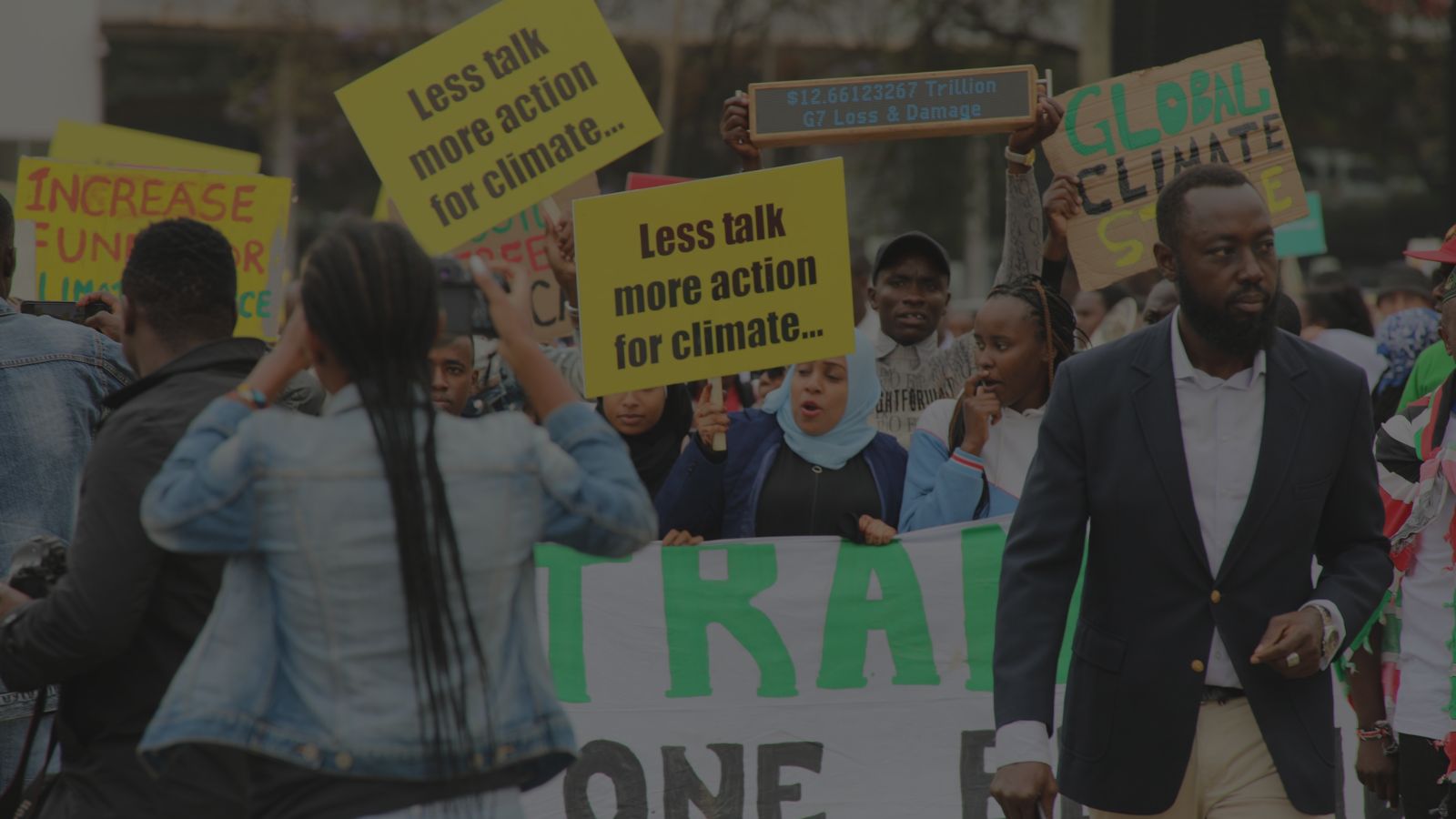Day one of the Africa Climate Summit kicked off with Kenya’s President H.E William Ruto welcoming delegates and the world to the future, which he defined as one of opportunities for Africa to lead the world on a green growth pathway. He painted a picture of a continent with immense resources in renewables, restorative agriculture, green industrial transformation, and natural carbon sinks.
Africa, the Future:
In a compelling opening address at the Africa Climate Summit, President William Ruto of Kenya set the stage for a future where Africa becomes a global leader in sustainable growth and environmental stewardship. He highlighted Africa’s abundant renewable resources, restorative agriculture practices, potential for green industrial transformation, and the untapped wealth hidden within its natural carbon sinks.
Harnessing Carbon Sinks:
President Ruto emphasized the significance of Africa’s carbon sinks as valuable assets that should be reflected in the continent’s GDP. These natural carbon repositories hold the potential for substantial economic growth when properly accounted for.
Clean Energy Self-Sufficiency:
He underlined Africa’s capacity to achieve energy self-sufficiency through renewable sources. Using Kenya as an example, with 92% of its energy already being renewable, he revealed the country’s ambition to reach 100% renewable energy by 2030 and establish a 100 Giga Watt grid powered entirely by renewables by 2040.
Unlocking Green Minerals:
President Ruto stressed the transformative potential of Africa’s green minerals. He envisioned these resources not only as a means to decarbonize the global economy but also as drivers of economic growth through value-added processing and manufacturing, transforming an $11 billion asset into a $7 trillion market opportunity.
Fair and Equitable Financial System:
To realize this future, President Ruto called for a fair and equitable global financial system. He advocated for reducing Africa’s debt burden, lowering the high capital costs paid by African countries compared to developed nations, facilitating investment flows, and eliminating trade barriers.
People’s March and Declaration:
Outside the summit venue, civil society organizations, indigenous communities, and non-state actors marched through Nairobi’s streets. They presented a People’s Declaration, calling for alternative models of development that move away from colonial and northern economic growth models. They urged the summit to prioritize Africa’s vision and leadership for sustainable development, free from undue external influences.
Investment in Carbon Markets:
Several significant deals were announced during the summit, including a $450 million pledge from the UAE and an additional $200 million from Climate Assets Management for the African Carbon Markets Initiative (ACMI). John Kerry, U.S. Special Presidential Envoy for Climate, highlighted the potential of carbon markets to attract investments but stressed the need for large-scale, integrity-driven funding.
Debates on Carbon Markets:
However, some climate experts expressed concerns about carbon markets in Africa, labeling them as pollution permits. They argued that these markets could perpetuate high emissions in wealthy industrialized nations while burdening African populations.
Renewable Energy Alliance:
A new alliance, the Accelerated Partnership for Renewable Energy in Africa (APRA), was unveiled. This alliance brings together several African nations to share knowledge and innovations in renewable energy, with Germany, Denmark, and the UAE as investment partners.
Youth and Indigenous Voices:
Youth representatives from across the region called for meaningful participation in Africa’s green growth agenda through an intergenerational youth fund and youth-led research and innovation. Indigenous communities, who receive only 1% of climate finance despite being most affected by climate change, asked for an Indigenous climate change resilience fund and the incorporation of traditional knowledge into policies.
E-Mobility:
President Ruto showcased his commitment to electric mobility by arriving at the summit in an electric vehicle. He reiterated his support for electric motorcycles as a means to reduce air pollution caused by second-hand cars imported from Europe and Japan.
Rising Temperatures’ Impact:
The State of the Climate in Africa 2022 report highlighted the acceleration of temperature increases in Africa and the severe impact of climate-related hazards, resulting in economic damages and loss of life.
Adaptation Efforts:
A facility of $190 million from the Green Climate Fund aims to promote sustainable agriculture in 11 countries, calling for a regional approach to adaptation efforts. The United Kingdom also pledged $62 million for adaptation projects in Africa.
Banks Fueling Climate Crisis:
A report by Action Aid revealed that banks have invested $3.2 trillion in fossil fuels since the Paris Agreement, with $370 billion going to industrial agriculture. This outpaces funding for climate solutions in the Global South by a factor of 20, with top banks like HSBC, Citigroup, and JP Morgan Chase being the major contributors.
Top Stories
- What African youth want addressed at Africa Climate Summit (Standard)
- “African youth want stakeholders to engage African youth as advocates for increased access to renewable energy, exploring Africa’s agricultural potential and finally invest in youth-led research and innovation for identifying local climate solutions.”
- Kenya: African climate summit in Nairobi to showcase green power potential (Africa News)
- “The goal is to transform the continent into the source of the world’s revolution in green power – but to achieve this, it needs an influx of funding and help for its debt burden.”
- African leaders at odds over climate plans as crucial Nairobi summit opens (The Guardian)
- “Wangari Muchiri, the Africa director at the Global Wind Energy Council, said debates around gas could stall critical discussions on what it would take for the continent to undergo green industrialization.”
- Africa Climate Week 2023: Charting a fresh course for climate action ( Enviro News Nigeria)
- “The Africa Climate Week provides a timely opportunity ahead of COP28 for regional stakeholders to exchange on barriers overcome and opportunities realised in different countries.”
- Global banks are fuelling Africa climate crisis: report (Business Daily)
- “The world’s money is flowing in the wrong direction – since the Paris Agreement, banks have provided 20 times more financing to fossil fuels and industrial agriculture. This is absurd and must stop.”





